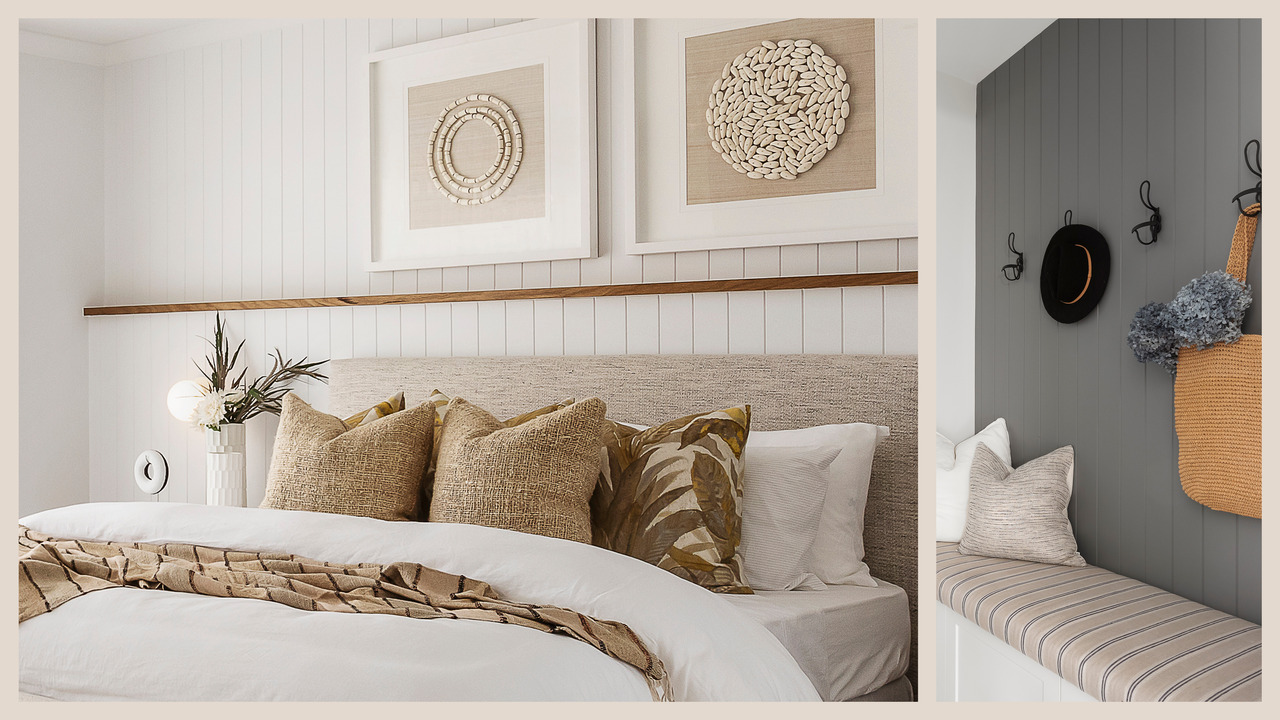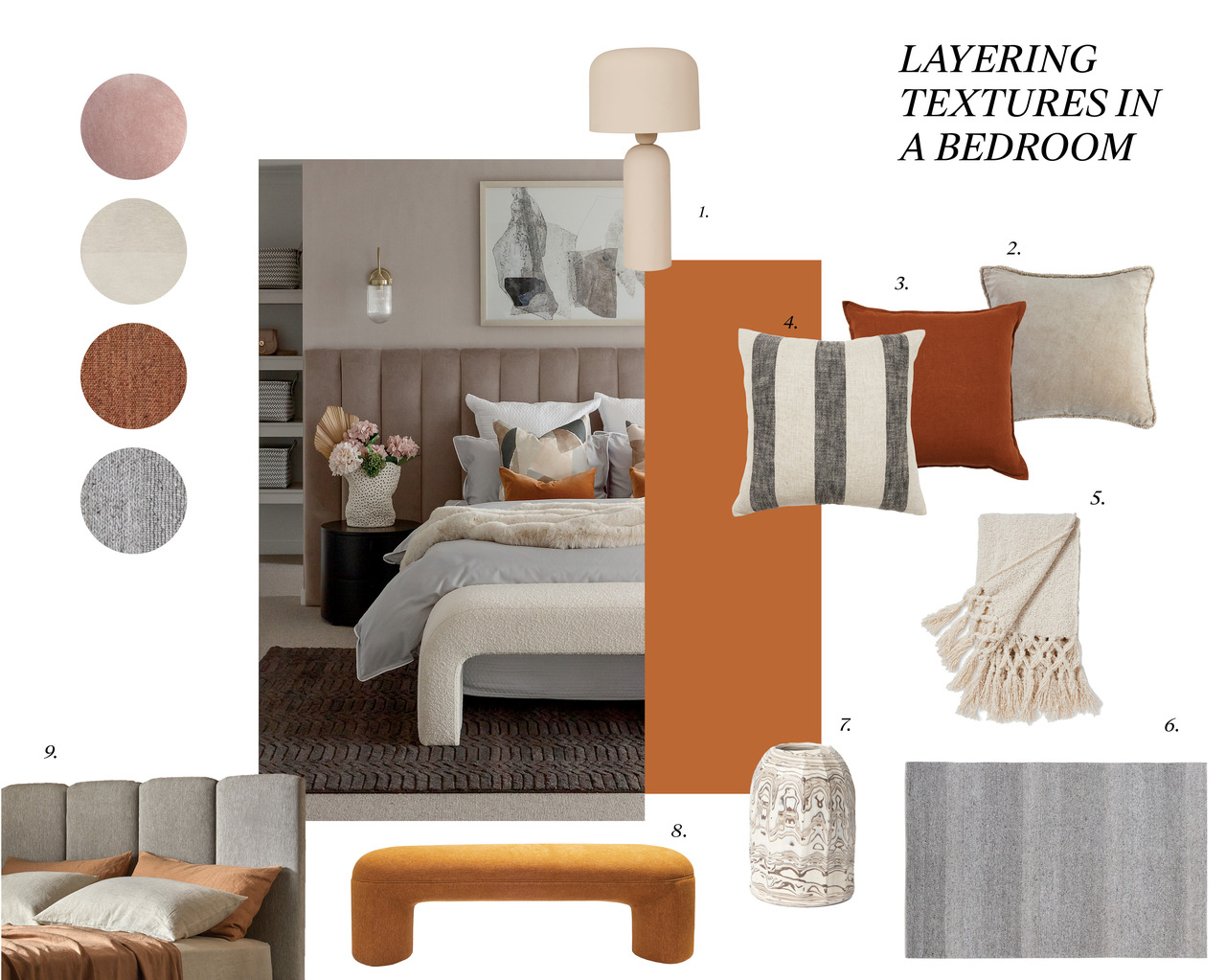Master the Art of Layering Textures

From plush rugs to cosy knitted throws, texture is the secret sauce that adds warmth and movement to your home – here’s how to layer it like a pro.
In the flurry of decisions you make when decorating a home, texture is one element that’s easily overlooked. But it can be the missing puzzle piece that really brings a room scheme together, adding depth, character and a sense of luxury. While colour on the walls can make a room look warm, it’s those tactile elements – plush rugs you want to sink your toes into, cosy throws made for curling up in, grainy wood furniture you want to run your hand across – that make it feel inviting.
Read on to discover how to master this subtle yet powerful design feature.

Texture transforms a room, making it feel dynamic and inviting. The trick is to mix a variety of different textures in a space, such as smooth glass and rough timber, or delicate silk and slubby linen.
What exactly is texture?
Texture is the way a surface feels to the touch. There are various types of texture and each brings a different feel to a space. Smooth textures like glass and silk can add a sense of elegance, while rough textures like timber and heavy wool add a cosy, homely vibe. Combining different textures, such as a slubby linen sofa with a velvet cushion or a delicate glass pendant light with a textural wallpaper, brings a balanced feel.
The power of texture
Look closely at any well-designed living space and you’ll notice that it features layers of texture – a mix of different surfaces finishes that combine to make the space feel dynamic and inviting.
Layering texture is similar to creating a colour palette. Start with a key piece that has texture to it, say a plump linen-covered bedhead, a velvet sofa or a shagpile rug, and gradually build upon it. Working one at a time, introduce layers of contrasting texture across the smaller details, from scatter cushions and window coverings to surrounding furniture, like your coffee table or beside tables, until the overall scheme feels harmonious.
And remember – variety is key to creating a balanced effect. Combine rough with smooth, matte with glossy, ribbed with flat. The contrast between these different textures is what will elevate your room scheme.
Like a calm look? Keep it neutral
A contemporary way to add texture is to stick to a neutral colour scheme. This also helps bring a serene feel to your living spaces. Start with a simple, nature-drawn colour palette – think warm creams, soft greys or gentle greens – and layer various tones of your chosen shade throughout the room. Add a few pops of gently contrasting colour, such as charcoal, seafoam or sand, for added interest.

1. Keiko lamp, Fenton & Fenton 2. Natural Valencia cushion, Pillow Talk 3. Banse cushion, James Lane 4. Zamaca cushion, James Lane 5. Ava Boucle Tassel Throw, Madras Link 6. Rug, James Lane 7. Blend vase, FERM Living 8. Mellow bench, Fenton & Fenton 9. Almos bedhead, GlobeWest.
Layering textures in a bedroom
When designing a bedroom, a bedhead upholstered in a textural fabric like linen or velvet is a great place to start. It creates an instant focal point and makes for a comfortable spot to sit up and read at night.
Team it with a luxuriously soft wool or silk rug underfoot in a tonal hue. Top the bed with some crisp bedlinen, a chunky woollen or faux fur throw, and some scatter cushions in contrasting fabrics like velvet, cotton or silk. Consider adding a chunky boucle bench at the end of the bed. For the windows, think sheer linen curtains that gently filter the light and blackout blinds to ensure a good night’s sleep.
Round out the look with a few harder surfaces. For example, a pair of rustic timber side tables, frosted glass wall lights, a sleek, modern table lamp, or a lacquered dresser.
Mixing textures in a living area
Every element in a living area, from furniture and flooring to art, is an opportunity to add texture. Start with a key piece with plenty of tactile appeal, such as a leather-, velvet- or linen-covered sofa, and surround it with a variety of different textures. This could include a ribbed, woven carpet, a chunky woven rug, a boucle armchair or two, a marble-topped or chunky timber coffee table, a sleek mirrored cabinet, or rattan side tables. Introduce metallic accents, such as brushed gold, chrome or stainless steel, for a dash of glamour.
And don’t forget your walls – even a subtle change in texture here can really lift a space. Consider a textured wallpaper, such as seagrass, painted timber wall panelling, a woven wall hanging or some wall lights with textural rope detailing. Or use a graphic, printed wallpaper to add a textural note.

ˆDial up the cosy vibes in your living area by mixing a crisp cotton-covered sofa with velvet cushions, a woven rug and a coffee table with rattan detailing. Add metallic accents for a dash of glamour.
Texture play in the kitchen
Mixing materials is a great way to add texture to your kitchen, giving it a homely feel that really draws people in.
Consider a stone-topped kitchen island, a marble-effect or textured-tile splashback, panelled cabinetry, and open sections of timber-effect shelving where you can display cookbooks or special pieces. Add statement pendants over the island in a woven natural fibre, sleek glass or steel. Complete the look with plush, upholstered bar stools.
Embrace irregularities
Texture adds character and charm to your home, and embracing the imperfections in natural materials is part of that appeal. The subtle irregularities in a handcrafted ceramic vase or the unique grain of a wooden table tell a story and make your home more interesting.
Light it right
Good lighting will visually bring your textural elements to life. Gentle, diffused lighting will highlight the subtleties of different textures, creating a cocooning sense of cosiness. Use strategically placed pendant lights, table lamps, and floor lamps to accentuate the layers of texture in your room.
Looking for decorating ideas for your new home? You’ll find all the inspiration you need at Carlisle’s display homes, which have been beautifully decorated by our team of interior designers. Pop in and see us today!
